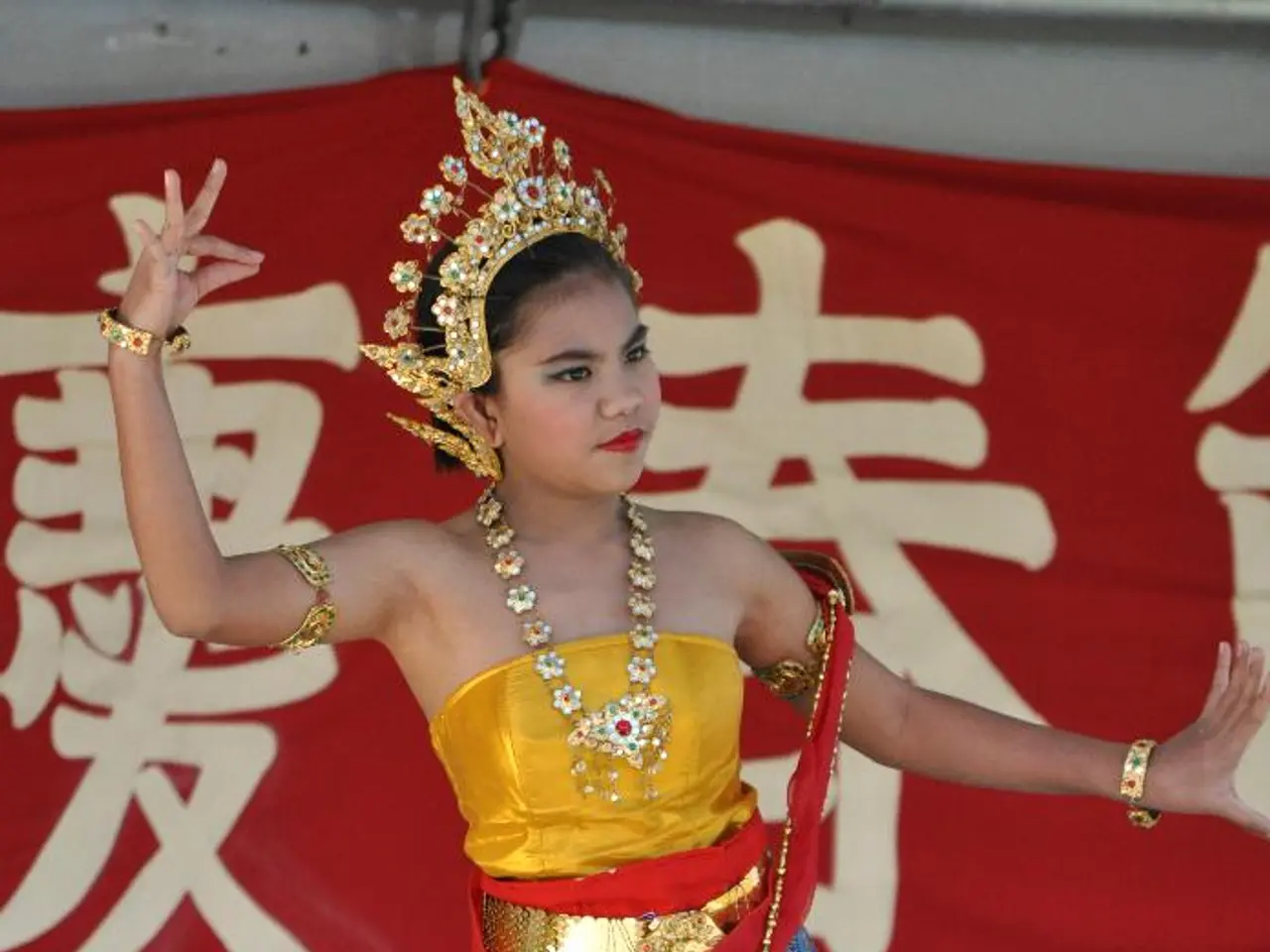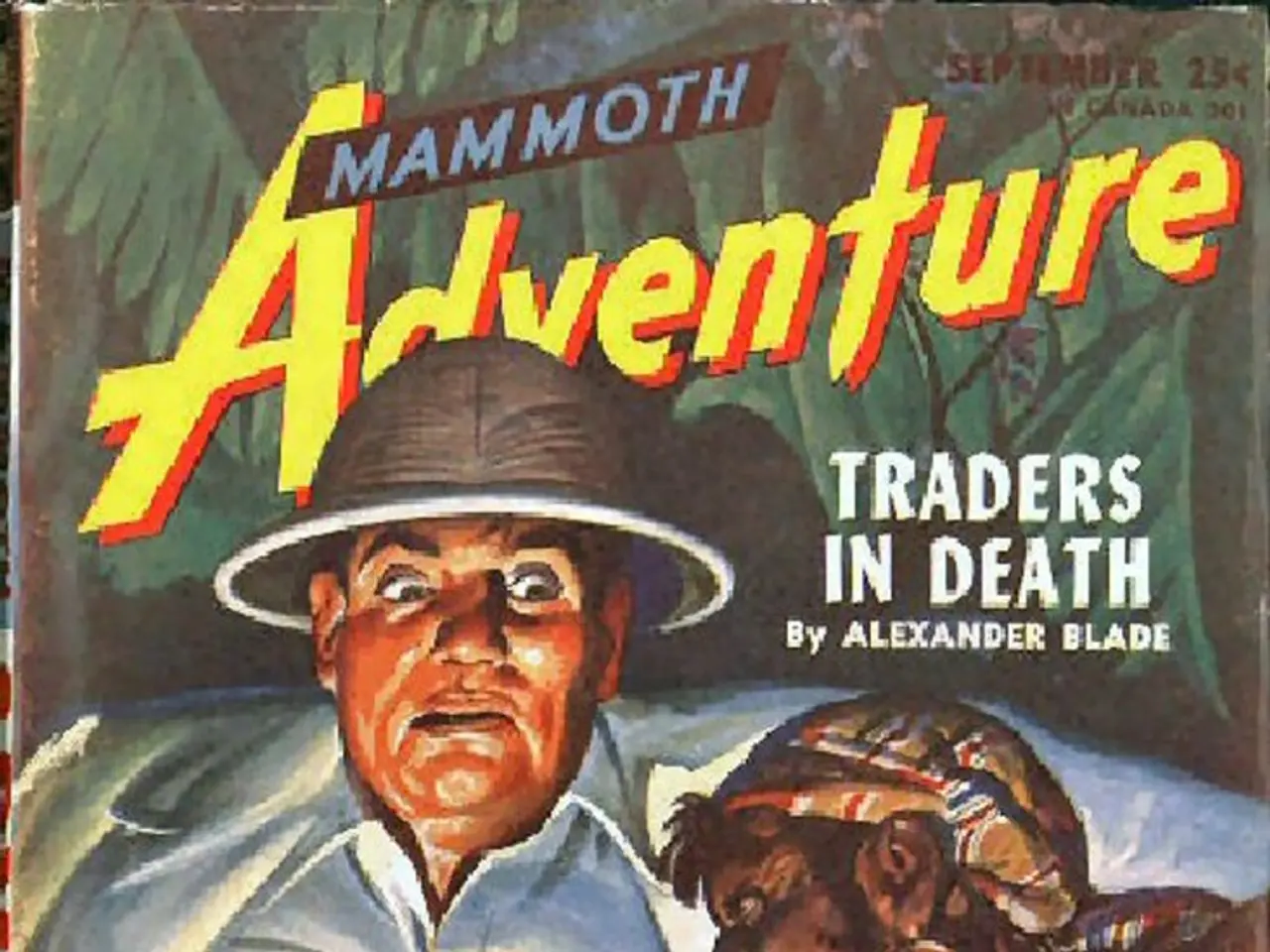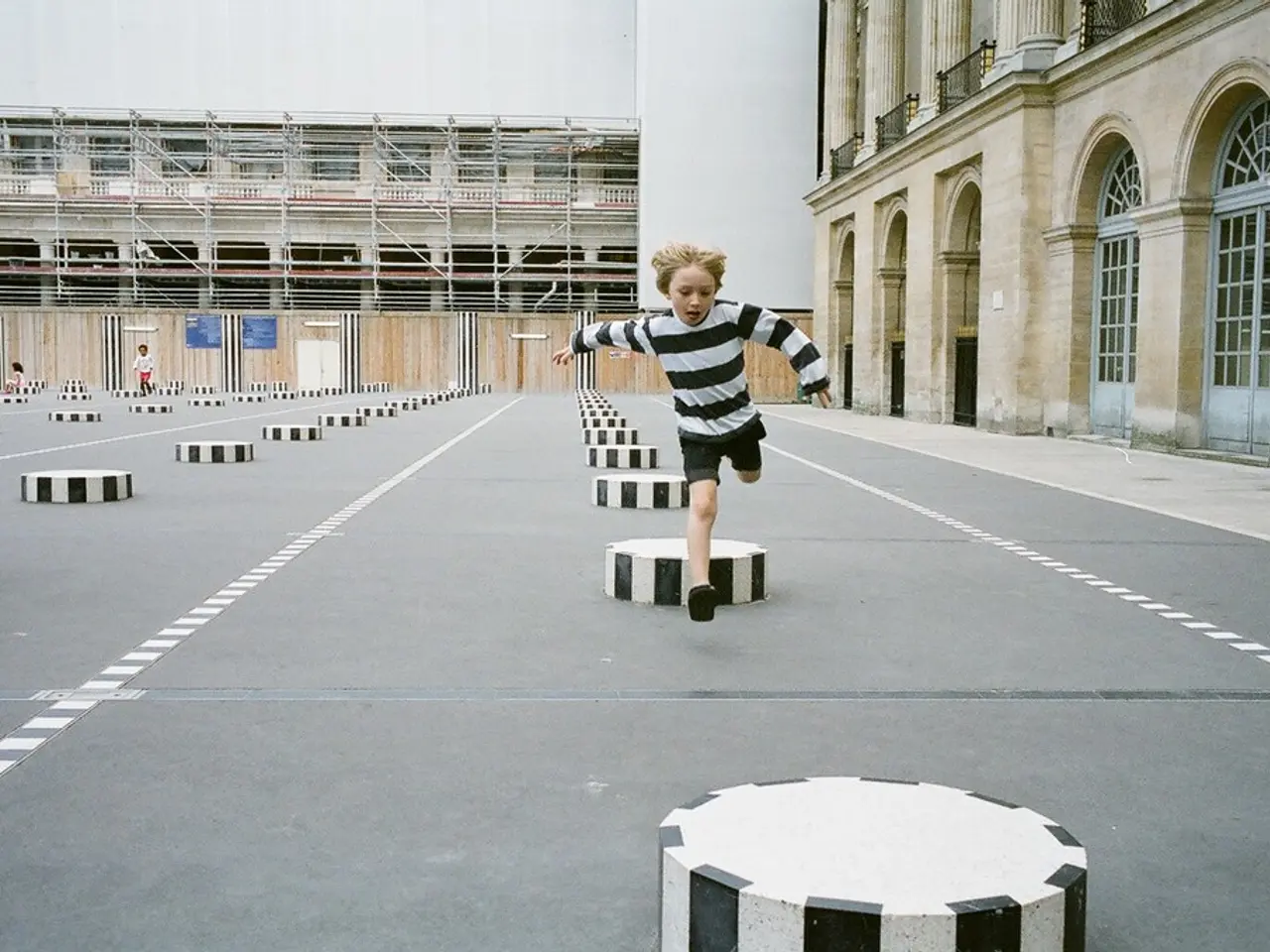Detailed Overview of Bharat Muni's Natyashastra: Key Points and Main Themes
================================================================================
Bharata Muni's Natyashastra, a monumental ancient text, holds foundational significance in the realm of Indian classical arts. Composed thousands of years ago, it systematically codified the theory and practice of theatre, dance, and music, serving as the authoritative guide for classical performance praxis over millennia.
The Natyashastra synthesises drama, dance, and music into a unified performance system, underscoring their interdependence as vital to Indian classical arts. One of its key concepts is the Rasa Theory, which introduces the aesthetic flavour or emotional essence evoked in the audience, remaining central to Indian art and literature.
Abhinaya, the art of conveying emotions and ideas through physical gestures, expressions, and words, is a critical aspect of the Natyashastra. Detailed descriptions of gestures, facial expressions, and body movements for storytelling and emotional conveyance form a core part of the text.
The Natyashastra outlines a five-act structure for a classical play, divided into Prakriti, Riti, Sanketa, Vidhikriti, and Anukriti. The director or Nayaka is responsible for guiding the performance and ensuring actors adhere to the principles of the text.
Music and dance are integral parts of the Natyashastra, used to influence the mood, pacing, and emotional impact of the performance. Raga and Tala are essential for setting the emotional tone of the play. The Sutradhara is responsible for the technical and logistical aspects of classical Indian theatre.
The most influential concept presented in the Natyashastra is Rasa, the emotional essence or aesthetic experience that a play evokes in the audience. Dance is used to convey emotions and actions that words cannot fully express.
The text addresses the spiritual, moral, and social functions of theatre, presenting Natya as a combination of acting, dance, and music, intended to create a complete artistic experience. Bharat Muni's Natyashastra offers insights into the cultural and artistic context of ancient India, providing explanations of acting, dramatic structure, music, dance, and aesthetics.
The Natyashastra is divided into 36 chapters and 6000 verses (Shlokas), serving as a manual for the performance of Natya (theater). Historically, the Natyashastra influenced the evolution of major Indian classical arts. Bharatanatyam, for example, traces its origins and storytelling techniques to Bharata’s codification.
The continued reverence for Bharata Muni, including recent cultural honours and statue unveilings, underscores the text's lasting legacy in Indian performing arts. Thus, Bharat Muni’s Natyashastra is not only a monumental artistic text but also a philosophical and aesthetic foundation that continues to inform and inspire Indian classical theatre, dance, and music traditions.
- Literature, ancient texts like Bharata Muni's Natyashastra, have carved out significant roles in the realm of art and self-development, offering insights into cultural contexts and personal growth.
- Natyashastra, a fundamental guide in Indian classical arts, systematically codifies literature, theatre, dance, and music, delving into aspects of fashion-and-beauty, education-and-self-development, and lifestyle.
- Bharata Muni's Natyashastra posits the concepts of characters, Rasa Theory, and Abhinaya, explaining the intricacies of conveying emotions and ideas through physical gestures, expressions, and words, thereby influencing literature and entertainment.
- The Natyashastra defines a structured format for classical plays across five acts, which also touches upon home-and-garden matters, considering the logistical aspects of classical Indian theatre handled by the Sutradhara.
- The Rasa Theory in the text presents the emotional essence or aesthetic experience that a play evokes in the audience, and dance is utilized to convey emotions and actions that words cannot fully express, bridging the realms of art and fashion-and-beauty.
- The text also raises questions about the spiritual, moral, and social functions of theatre, categorizing Natya as a combination of acting, dance, and music intended to create a complete artistic experience, echoing themes found in books and education-and-self-development materials.




